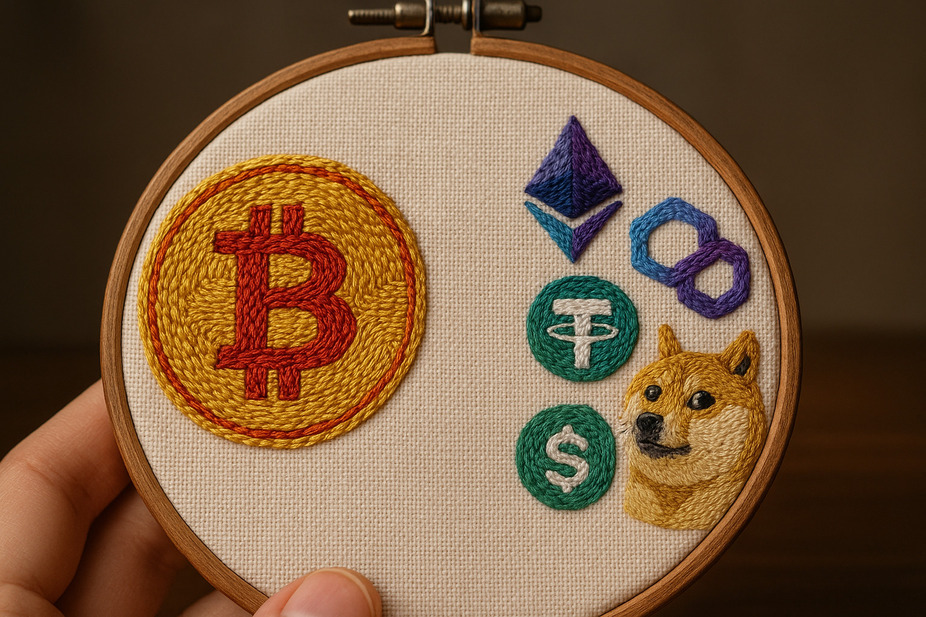Popular cryptos
Bitcoin Gold
Download Ironwallet app and get tool for making transaction without network fee
About Bitcoin Gold
Bitcoin Gold (BTG) is a hard fork of the original open-source cryptocurrency, Bitcoin. It split from the Bitcoin blockchain in October 2017 with the stated goal of returning Bitcoin mining power from large companies to ordinary users. The fork was driven by a group of Bitcoin enthusiasts concerned about the centralized control of Bitcoin mining power in the hands of large corporations.
Bitcoin Gold maintains the key properties of the Bitcoin protocol – a public blockchain, distributed consensus rules, fixed supply schedule, and capacity for peer-to-peer transfer of value. However, Bitcoin Gold implements changes to Bitcoin’s proof-of-work consensus mechanism in order to democratize the mining process.
History of Bitcoin Gold
Bitcoin Gold was created through a hard fork of Bitcoin on October 25, 2017 at block height 491,407 on the Bitcoin blockchain. It was initially developed by the pseudonymous developer “h4x3rotab” and launched by a team of volunteer developers and members of the Bitcoin community.
The stated goal of the Bitcoin Gold fork was to change Bitcoin’s proof-of-work algorithm from SHA256 to Equihash, rendering specialized Bitcoin mining hardware obsolete. This would make mining accessible to more users with ordinary GPUs instead of expensive specialized ASIC chips. The developers believed this would decentralize and democratize Bitcoin mining again.
However, the launch of Bitcoin Gold was rocky. An unknown hacker was able to gain control of over half the network mining power in the first few days through a 51% attack. The attacker(s) used this control to deposit large amounts of Bitcoin Gold on cryptocurrency exchanges. The price of BTG dropped dramatically due to this controversy over the security and distribution of the new cryptocurrency.
Difference Between Bitcoin and Bitcoin Gold
While Bitcoin Gold is derived from and shares history with Bitcoin, there are several key differences:
- Mining Algorithm – Bitcoin uses SHA256 for its proof-of-work mining algorithm, while Bitcoin Gold uses Equihash requiring more mainstream computing hardware.
- Total Supply – Bitcoin has a total supply limit of 21 million BTC. Bitcoin Gold also has a hard cap of 21 million BTG.
- Price – 1 BTG has traded well under 1 BTC and under $500 since its launch, versus Bitcoin rising to over $60,000 per coin.
- Adoption – Bitcoin is more widespread with more users, merchants, apps built on its blockchain. Bitcoin Gold is attempting to catch up.
- Transactions – Bitcoin has faster block times (10 minutes target) compared to Bitcoin Gold’s target of 15 minutes.
Overall, Bitcoin retains the dominant network effects as the original chain, while Bitcoin Gold offers tweaks to its fundamental attributes.
Bitcoin Gold’s Unique Approach
The main innovation brought forth by Bitcoin Gold was the switch from Bitcoin’s SHA256 mining algorithm to the Equihash algorithm in an effort to address the perceived issue of centralized mining control.
Equihash requires miners to use a large amount of RAM, which hinders the use of integrated circuits specialized for mining (ASICs). This is intended to open the door for ordinary users to mine Bitcoin Gold from home computers using GPU chips rather than expensive, centralized ASICs that have come to dominate Bitcoin mining.
Additionally, Bitcoin Gold implements a proof-of-work adjustment algorithm called “DigiShield” aimed at quicker adjustments to maintain more steady block production times and greater network stability compared to Bitcoin, which has experienced larger fluctuations in its difficulty adjustments and block times.
The Bitcoin Gold community aims to focus on decentralization and giving mining control back to common users as part of a wider effort to stay true to Bitcoin creator Satoshi Nakamoto’s original vision. However, so far Bitcoin Gold has had trouble gaining comparable popularity and adoption rates to Bitcoin.
Bitcoin Gold Mining
As outlined, Bitcoin Gold mining relies on the Equihash mining algorithm rather than Bitcoin’s SHA256. This means ordinary graphics cards can be used to mine Bitcoin Gold, whereas specialized ASIC chips have taken over Bitcoin mining.
The stated goal of this approach was to make mining more decentralized, accessible, and profitable for common users and enthusiasts. In practice, however, Bitcoin Gold mining has still tended towards concentration in mining pools as well as larger industry mining operations.
Still, Bitcoin Gold mining is viable and profitable for amateur miners using desktop computers and GPUs more so than Bitcoin. Various crypto mining profitability calculators estimate costs and returns from mining Bitcoin Gold based on factors like mining difficulty and energy costs. Some GPU chipsets can run Equihash more efficiently, such as AMD graphic cards.
Controversies Surrounding Bitcoin Gold
The largest controversy plaguing Bitcoin Gold’s reputation was the major hack and theft shortly following its mainnet launch. It is estimated the attackers got away with $18 million worth of BTG during a 51% attack in the first few days.
This highlighted issues with the coin distribution and security model of Bitcoin Gold in its embryonic stages. It relied too heavily on volunteer developer resources without proper vetting, testing, and safeguards to prevent such an attack and theft of a large portion of the overall mined coin supply.
Additionally, there were marketplace scams tricking users into handing over private wallet keys resulting in stolen BTG. All of these black marks hurt Bitcoin Gold’s legitimacy in the eyes of critics and users alike, stalling broader adoption and contributing to its price declines.
More recently in 2020, it was discovered that the founder of Bitcoin Gold was secretly mining blocks with developer tax funds meant to support the project, prompting community backlash. While Bitcoin Gold has made efforts to improve transparency and governance, it is still overcoming early challenges.
Usage of Bitcoin Gold
Since its founding in 2017, Bitcoin Gold has gained some adoption particularly in Asia, with support found on a handful of crypto exchanges and wallets. However, global adoption still remains quite low compared to Bitcoin and other rivals.
As of early 2023, Bitcoin Gold’s market cap stands at around $300 million, a fraction of Bitcoin’s near $1 trillion market cap. Trading activity and transactions remain low, with daily transfer value in the low millions of dollars according to metrics sites.
Bitcoin Gold hopes to boost adoption by transitioning from a proof-of-work to a proof-of-stake consensus mechanism sometime in 2023 which offers greater efficiency and environmental sustainability. Staking would also enable holders to earn rewards for participating in the network.
Additionally, the Bitcoin Gold community is working on decentralized applications and services to build on top of Bitcoin Gold such as Bitgild (for tokenization of assets), and Aurus (for decentralized finance apps) which could aid adoption if traction grows.
How to Interpret Bitcoin Gold Price
To effectively interpret its price, one must keep an eye on the larger cryptocurrency ecosystem. Technological advancements, investor behaviors, enforced market regulations, and the performance of traditional Bitcoins all impact Bitcoin Gold’s price. Additionally, events such as the ‘hard fork’ that created Bitcoin Gold have sparked drastic price fluctuations. This calls for a robust risk management strategy when investing.
While the high volatility of Bitcoin Gold presents possible investment opportunities, it should be approached with caution and informed perspective. It is essential to consider not only immediate price movements but also the long-term sustainability. Besides, as the cryptocurrencies market continues to evolve, new scenarios and factors will emerge, affecting the price, requiring constant vigilance and adaptability among investors.
Future Predictions
Certainly, predicting the future of Bitcoin Gold necessitates an examination of various factors, including market trends, technological developments, and regulatory changes. Its viability will largely depend on its ability to differentiate itself from traditional Bitcoin and Etherium, particularly in terms of improvising a solution for mining monopolies, one of the primary objectives behind the creation of Bitcoin Gold. If the advantages of Bitcoin Gold, such as greater decentralization and fair mining, are appreciated and recognised by a wider community, the digital asset could witness a potentially positive growth trajectory.
However, the digital asset market is notoriously volatile, so caution must always be exercised. Policymakers must make an effort to alleviate this issue to attract cautious investors by implementing cryptocurrency regulations. As the sector matures, more widespread acceptance and understanding of cryptocurrencies could potentially usher in a brighter future for these innovative digital assets. Yet, within the realm of technology, nothing is predictable and the best course of action is due diligence and keeping abreast of the latest trends. It would certainly be interesting to watch how Bitcoin Gold, and indeed other cryptocurrencies, evolve in the future.
The Prospects of Investing in Bitcoin Gold
Investing in Bitcoin Gold brims with potential due to its intrinsic scalability and decentralizing mechanisms which make it a feasible alternative to traditional Bitcoin. It emanates from the promise of enabling an egalitarian approach towards mining, facilitating more inclusion, ultimately making the cryptocurrency market more competitive. Unleashing the potential of GPUs instead of ASICs allows ordinary users to participate in the mining process, making it more democratic. Although it’s a younger variant of Bitcoin, it brings a diversified approach to the table, crafting its unique niche. Its volatility, a common trait in the crypto world, isn’t necessarily a downside but rather a source of immense profits if leveraged appropriately – one must always tread cautiously though as the risk of loss remains. Given its trend of positive growth, Bitcoin Gold could provide a robust supplement to a diverse investment portfolio. Its prospective future, underpinned by its focus on decentralization and equal opportunity, could potentially yield significant returns, making it an intriguing proposition for astute investors worldwide. As always, considered research is of uppermost importance before diving into the crypto-ecosystem.

























